Hey there, colleague! What follows is a mini-lesson that teaches secondary students how to learn more effectively. It's part of a series, which you can access right here. When we teach students about learning, we empower them to work smarter and get better results for their effort. This is massively important for cultivating the five key beliefs beneath student motivation.
Without further ado — here's today's post! -DSJR
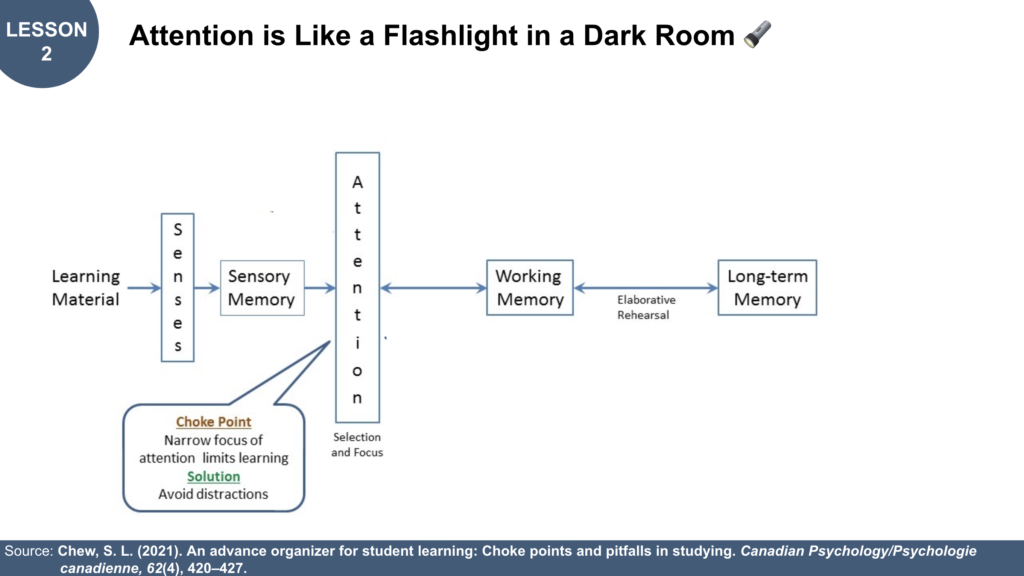
Hi, students! Welcome to class today. Before we get started on some amazing content, let's get out our spiral notebooks and learn a bit more about how learning works.
All right — so over the next couple of days, I want us to spend these mini-lessons taking notes on and thinking about what cognitive science researcher Stephen Chew calls “choke points” in learning — basically, I think of them as bottlenecks.
Have you ever seen what happens at the end of every school day in the student parking lot? Cars start lining up, right? And what places cause them to line up — what are the places where the cars can't all get through at the same time, and so there's a delay?
Yeah — the exits onto 17 Mile Road. There are only two ways to get there, and there are hundreds of cars in the student parking lots, and maybe a hundred more cars that are trying to come in off of 17 Mile to pick students up, and a couple dozen busses trying to leave… it's kind of messy, right? Because those exits are bottlenecks. They are what Dr. Chew would call “choke points.” Same ideas.
So the thing is, every single learning has a few bottlenecks like this built into our systems — there are four, actually, that are really important. Let's make a list on the page right after the diagram we started yesterday.
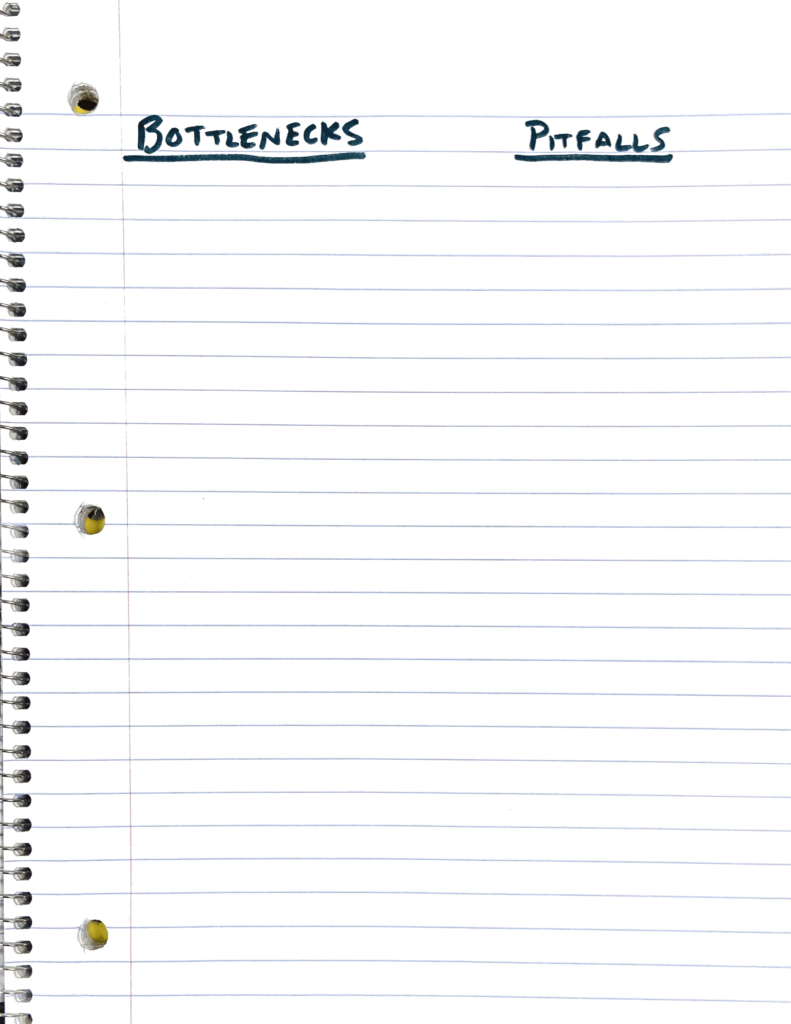
All right — now don't worry today about that Pitfalls column, we'll handle that later, but I just want you to leave some space for it.
For today, let me preview for you what the four bottlenecks are — and then we'll end up adding our first bottleneck to the diagram we started yesterday.
All right — the bottlenecks that all humans have in their learning systems are:
- Attention is Narrow
- Concentration is Hard
- Working Memory is Limited
- We Forget Stuff
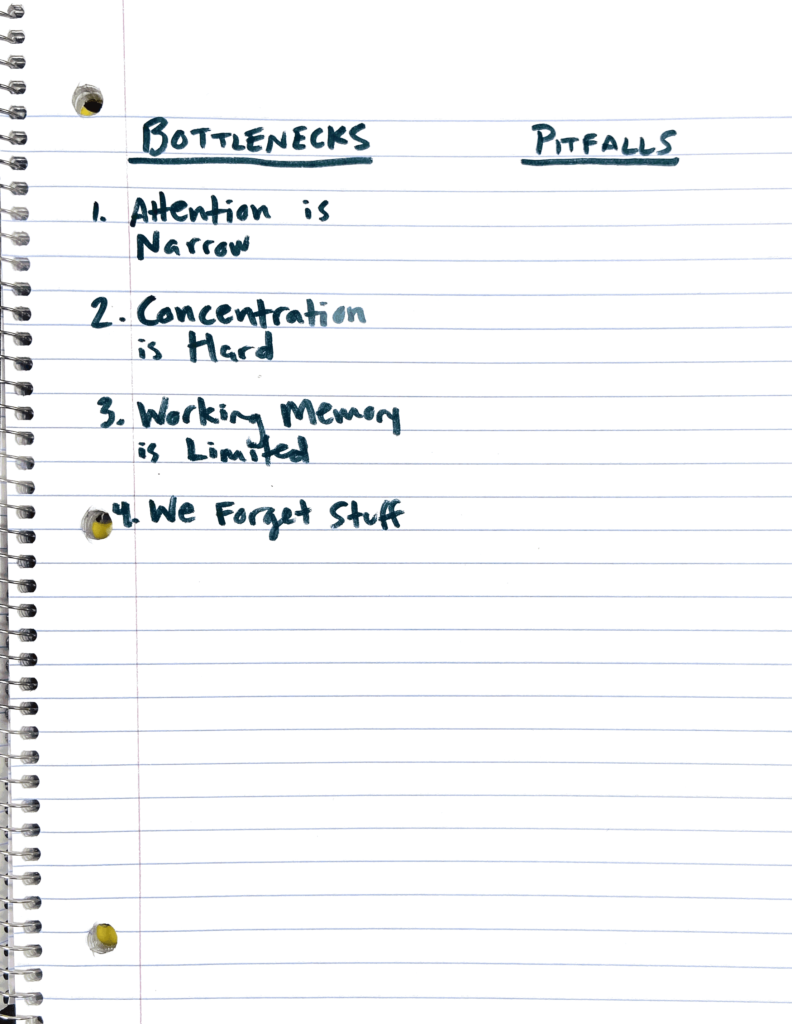
Reeeeeaaaalll fancy, right? But there's a TON that's important and interesting in these bottlenecks. A ton. And understanding them can make us a lot more effective at learning — which means more time for things outside of school while still being successful in school.
All right — back to our diagram from yesterday. Let's add our first bottleneck: attention is narrow.

Now notice, I want you to leave some space down in the bottom of that little speech bubble because we're going to add a solution in a minute.
First let's think about what this means. I want you to think about how many things there currently are that you could be paying attention to. Look at all the different things on my walls. Look at all the different people in this class. Listen to all of the little sounds: the hum of the heater, the buzz of the projector. Look at the classroom door, see if there's anything happening outside. Look out the window, at the weather. Look at the clock, see what time it is. Look at your desk, the materials on it. Think about what's in your pockets. Think about what's in your bookbag. Think about what happened during your last class period. Think about what might happen this next class period. Think about what your plans are for the weekend. Think about what your plans are for the future. Think about your favorite movie.
So there are a LOT of things that you can think about just sitting right here in my world history class, aren't there? A LOT. But the trouble is, you can't think about all of those things at the same time, can you? You can't pay attention to all of the posters in my room, plus what I'm saying, plus what you're going to do this weekend — can you?
No way!
No one can.
And part of that is because attention is narrow. It's like a flashlight beam in a pitch dark room. Picture this room right now, but pitch dark, and you've got a flashlight, and you shine it at the wall.
Will the whole room be illuminated? No. Just a circle, right?
That's how attention works.
So, actually, let's draw a little flashlight by this speech bubble — a little picture to help us remember what this means:
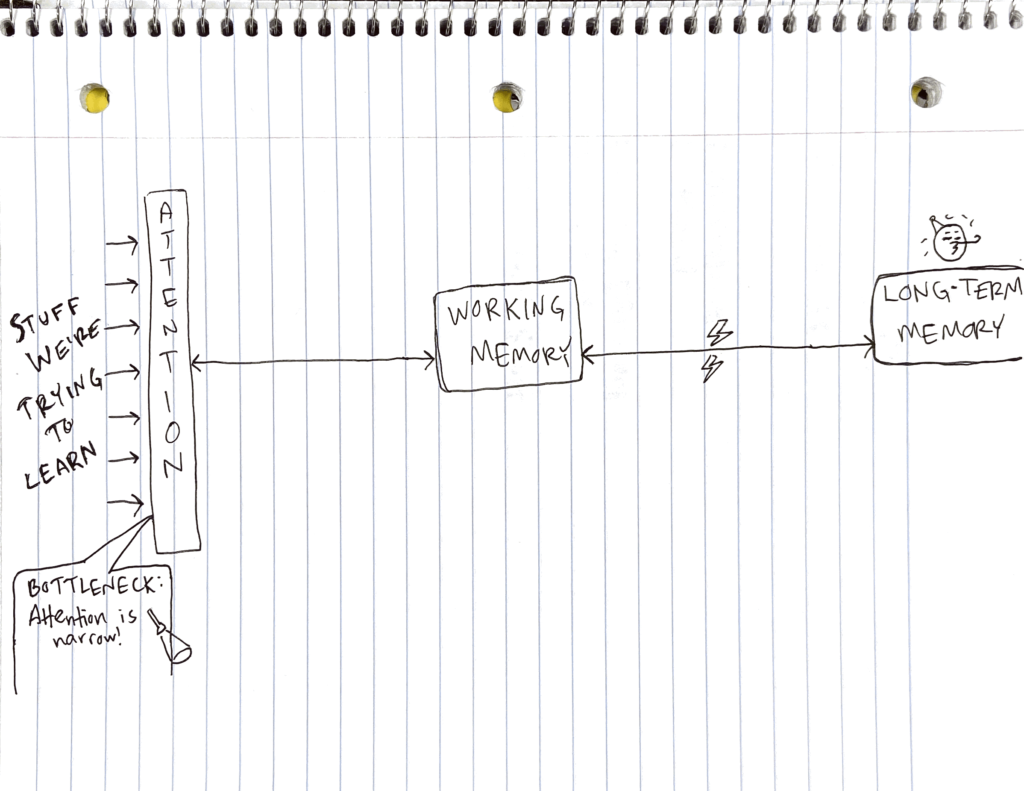
Cool. Let me walk around real quick and check out some of these flashlights.
All right — now let's solve the problem of this bottleneck. Here it is — here's what learning scientists tell us is the solution: Eliminate distractions.
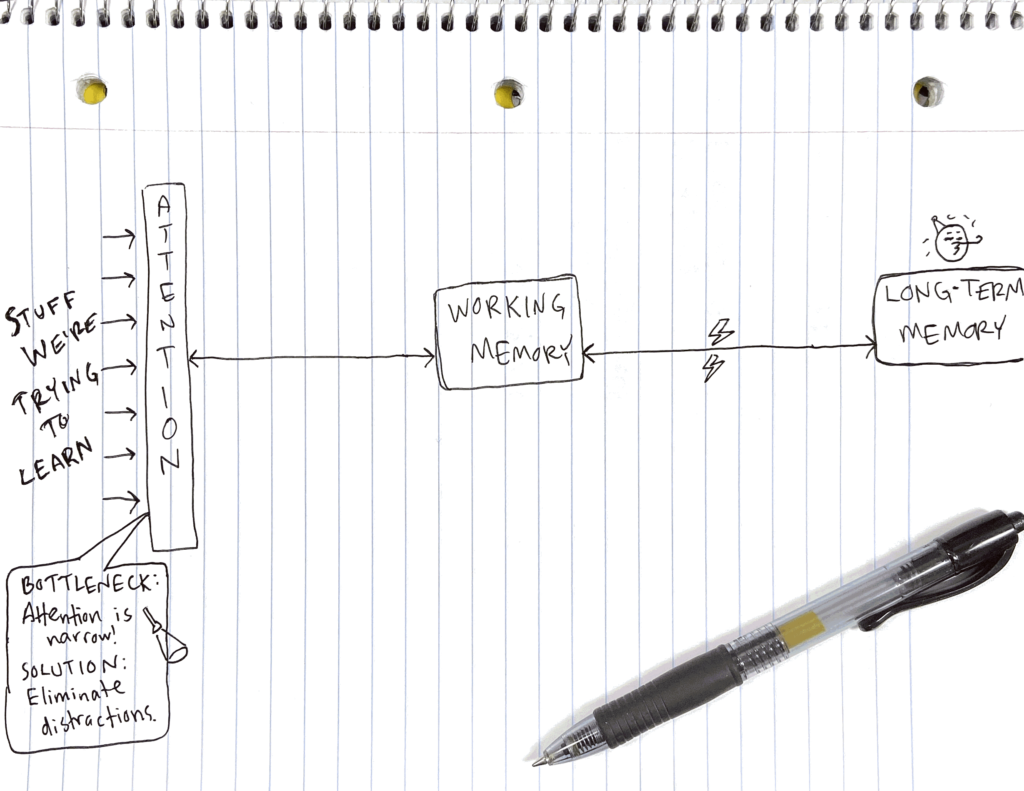
Boom. There we go. Speech bubble completed.
Wow, right? Eliminate distractions. How boringly obvious is that!? But here's a secret: it's the obvious stuff that people most often ignore.
Tell your partner real quick — what are some things that tend to distract you when you're trying to learn?
[Give pairs 45 seconds to share.]
Okay, thank you. Now let's call out some distractions you just shared. Let's write them on the board:
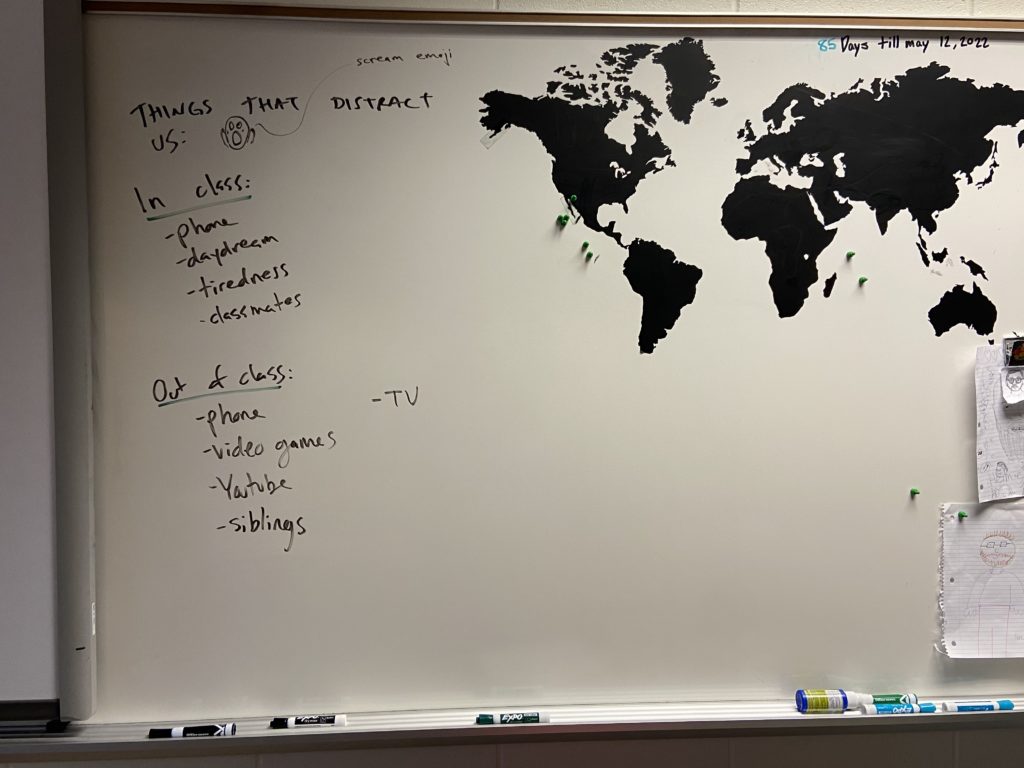
Yeah, great. These are the kinds of things that distract us.
Now, what are some ways to get rid of these when we're trying to learn? That's the key — I don't want you getting rid of your siblings for your whole life! I just want you thinking strategically about minimizing sibling distractions when you're trying to learn. I don't want you to get off your phone — I just want you to get rid of it as a source of distraction when you're trying to learn.
Once, I had a student who, all through high school and even into college, would do something every single time she was studying or working on learning at home: she'd turn her phone off, and then she'd put it outside her bedroom door, and then she'd close her door. This way, she said, she didn't have to even see her phone — didn't even have to have it in the same room.
That, students, is an example of overcoming the first bottleneck to learning: attention is narrow! So, we've got to intentionally put distractions in the dark, well outside the beams of our flashlights.
Note from Dave: This article is part of a series of mini-lessons designed to improve student motivation by cultivating the Effort and Efficacy beliefs. More on the series here; more on the idea of the five key beliefs here.
Leave a Reply